How Much Does It Cost to Repair Wood Siding?
Wood siding has been used on homes across the country for hundreds of years. Wood siding can also last for decades when taken care of and well maintained. However, your wood siding must be maintained to last. Regular repairs of the siding are part of this maintenance because repairs maintain the siding’s integrity. By repairing damage to your wood siding as you find it, you help prevent bigger problems from occurring or a total siding replacement.
Wood siding can develop issues from small holes to significant rot, leading to a range of repairs and associated costs. The national average cost to repair wood siding is $500 to $2,000, with most homeowners paying around $1,400 to completely remove, replace, and finish 4 rotten cedar clapboard planks. This project’s low cost is $200 to fill and repair 2 woodpecker holes. The high cost is $5,000 to remove and replace the cedar siding and substrate on a 150 sq.ft. area of a home.
Wood Siding Repair Cost
| Cost to Repair Wood Siding in a House | |
|---|---|
| National average cost | $1,400 |
| Average range | $500-$2,000 |
| Low-end | $200 |
| High-end | $5,000 |
Wood Siding Repair Cost by Project Range
Wood Siding Repair Cost per Square Foot
Wood siding can sustain many damages. Some are localized, while others may be widespread. If the issue is not confined to a single spot, your contractor may charge for repairs by the square foot. These costs include the labor and material for the repair.
Many types of wood siding are on the market, resulting in a range of costs for the material. Some wood siding types are also more difficult to work with than others, and some repairs may be more complex. This leads to a wide range of repair costs per square foot. In most cases, you pay between $8 and $24 a sq.ft. for repairs. But complex repairs may go as high as $32 a sq.ft., and simple repairs with low-cost materials may cost $5 a sq.ft. The most common repairs involve removing the section of damaged wood and replacing it with new wood. Simple repairs may include filling small holes, while a complex repair involves removing and replacing large sections of difficult to work with sections, such as tongue-and-groove teak, and staining it to match the home. However, if the problem is localized, you are more likely to be charged by the project rather than the square foot.
Cost to Repair Wood Siding on a House by Problem
Wood siding is a durable and long-lasting material. However, it can be damaged by several things, including impact, insect activity, moisture damage, the wrong nails or fasteners 1, or woodpeckers drilling for insects beneath the planks. Each potential issue may result in a different repair with varying costs. For example, if there is a hole or crack in a plank, but the rest of the plank and surrounding area are sound, the hole or crack can be filled. However, if the issue permeates the plank, such as wood rot or insect damage, the entire plank and possibly the surrounding planks must be removed and replaced with new wood. There can be a fairly wide range of costs associated with repairing specific issues to wood siding. Below are the most common issues impacting wood siding and the average repair cost.

| Problem | Average Costs |
|---|---|
| Crack | $50 - $200/each |
| Woodpecker Holes | $100 - $200/each |
| Nails Popping Out | $100 - $500/board |
| Mold | $500 - $700 |
| Rot | $500 - $2,000 |
| Warped | $500 - $2,000 |
| Termite Damage | $500 - $2,000 |
Repair Cracked Wood Siding
The cost to repair a crack in wood siding ranges from $50 to $200 per crack. Cracks occur in wood for several reasons. Some wood cracks or develops fissures from humidity changes. These do not usually impact your home’s structure but allow moisture to enter the wood, so they should be filled. Filling the cracks is usually done with a wood compound, but caulk 2 may be used if the crack is small enough. The compound can be painted to match the wood when dry.
Repairing Woodpecker Holes in Wood Siding
The cost to repair holes in your siding is $100 to $200 per hole. Woodpeckers are one of the most common causes of holes in wood siding. If your wood has insect activity or insects below the siding, woodpeckers may damage your siding to reach them. Sometimes, woodpecker holes indicate a larger problem that needs to be addressed to prevent serious problems. The holes can easily be filled with a wood compound, and then sanded 3 and painted to match your siding.
Nails Popping Out of Cedar Siding
The cost to repair siding that has been loosened from improper fastening is $100 to $500 for each board. Nails come loose in cedar or other sidings for several reasons, causing loose boards. The wrong nails or fasteners are the most common reason. If the wood siding has been treated with chemicals, this can also cause non-galvanized nails to rust, thinning the metal and making them come loose. New nails can be sunk into the siding to reattach the impacted boards. The cost is determined by how many boards are loose and need to be reattached. Generally, this issue impacts a section of siding at a time, usually under 50 sq.ft. If the area is larger, your costs could be much higher.
Mold on Wood Siding
Removing mold from wood siding costs $500 to $700 in a 100 sq.ft. section. Wood siding is porous, meaning it may absorb moisture and become a breeding ground for fungus. Mold can often grow harmlessly on wood siding, but this can be unattractive and detract from your home’s appearance. Some molds eat wood siding, but this is more similar to wood rot and is dealt with similarly. Removing mold from wood siding can be done by pressure washer or hand with a scrub brush and mold cleaners that do not affect the wood.
Cost to Repair Rotted Wood Siding
Repairing rotten wood siding costs $500 to $2,000 in a roughly 100 sq.ft. section. To repair a rotten plank, it must be cut out of the siding, disposed of, and replaced. Your costs depend on how many planks are impacted, the plank size and style, and wood type. Some woods are more difficult to work with, while some styles may be difficult to remove without impacting the siding around them. Once the wood has begun to rot, it needs to be removed. Rotten wood holds moisture, meaning the rot spreads until you deal with it.
Warped Wood Siding
The cost to replace warped wood siding averages $500 to $2,000 in a roughly 100 sq.ft. section. If your wood is subjected to heavy moisture, it may warp when drying. Wood siding that has not been adequately painted, stained, or caulked may warp. Some wood types are more resistant to warping than others, so this is not an issue that impacts every home. The impacted planks must be removed and replaced to repair warped siding. The project’s cost depends on how many planks are impacted, their style, and wood type. Most woods that warp tend to be less expensive, but wood prone to warping can affect more than one area.
Termite-Damaged Wood Siding
The cost to repair termite damage to wood siding ranges from $500 to $2,000 for a roughly 100 sq.ft. section. If the termite damage is limited to a single area, you can repair it by removing and replacing the affected planks. This should be coupled with preventative termite eradication methods to ensure no other areas become affected. These costs are for mild-to-moderate termite damage. If the issue is severe and affects more than one or two isolated areas, you may need to consider replacing all the siding on your home to ensure no further problems.
Wood Siding Repair Cost by Solution
The most common method for repairing wood siding is to remove the impacted planks and replace them with new material. However, you can use other methods to repair the siding if the siding is in good condition and only cracked with small-to-moderate holes. This can include using a filler for holes and cracks or caulking seams 4.
After repairs are made, you may need to paint or stain the boards to match the siding. However, you may need to paint or restain the entire exterior so that the siding matches if the repairs were significant. Below are the average costs associated with the most common repairs.

| Solution | Average Costs |
|---|---|
| Replace | $4 - $35/sq.ft. |
| Patch / Fill | $100 - $200/board |
| Caulk | $100 - $200/board |
| Restain | $3,750 - $9,750 |
Cost to Replace Wood Siding
The cost to replace damaged wood siding ranges from $4 to $35 per sq.ft. Wood species are the biggest driving factor behind the cost because the material seriously impacts the project cost. Wood siding comes in many styles, from classic board-and-batten and clapboard to more modern bevel styles. It can also come in several widths, from 3” to 12”, and many wood types, from inexpensive pine to exotic ipe 5. Some styles are more difficult to remove from the home than others without damaging the surrounding sections. The more complex the siding, the higher the labor cost to remove that material and reinstall it. The wood used in the replacement can also impact your costs because wood species have a range of costs for material. The more rare or exotic the wood, the higher its costs to repair and replace. This can create a wide range of associated repair costs for different siding types. So, while a thin Dutch lap siding repair made from pine may be $4 a sq.ft., a more complex siding job like tongue and groove made of cedar may cost as much as $35 a sq.ft. Difficult to work with materials like shakes 6 and shingles 7 in hardwoods like teak or ipe may cost $10 to $20 a sq.ft. to repair. Below are the average costs per sq.ft. to replace different wood sidings.

| Type | Average Costs per Sq.Ft. |
|---|---|
| T-111 | $4 - $7 |
| Pine | $4 - $7 |
| Fir | $5 - $8 |
| Douglas Fir | $6 - $9 |
| Engineered | $7 - $17 |
| Redwood 8 | $8 - $25 |
| Accoya | $10 - $17 |
| Teak | $10 - $19 |
| Cypress | $10 - $19 |
| Cedar | $10 - $35 |
| Spruce | $11 - $18 |
| Ipe | $13 - $20 |
| Garapa | $14 - $30 |
Patching Wood Siding
The cost to patch or fill holes in wood siding averages $100 to $200 per board. This cost is imagining that the board has just one hole. This is a common solution if there are small-to-moderate holes or cracks in the siding. The filler is a wood compound applied to the hole, sanded, and then stained or painted to match the exterior. Filling holes helps the wood maintain integrity and keeps out moisture and insects. This can help prevent more serious repairs.
Caulk Wood Siding
Caulking wood siding costs $100 to $200 per board. Wood siding needs to be caulked around windows and doors to help make it watertight. However, this caulk can come loose or break, so it needs to be replaced. When replacing boards on your siding, the new boards are caulked on the edges occasionally to help seal them with the older boards. This is particularly true for siding styles that normally interlock. You cannot interlock the new boards in a repair, so they must be caulked.
Cost to Restain Cedar Siding
The cost to paint or stain your siding is $3,750 to $9,750 for a 1,500 sq.ft. house. This is not considered a repair but often follows repairs. If several planks or sections of siding were replaced during the repairs, these no longer match the exterior because they are raw wood. While you can sometimes paint only the new boards, it can be difficult to get a perfect match because it is common for the older siding to be dirty or faded, or you may have difficulty getting a new batch of paint that perfectly matches the old. It is common to paint or stain the entire exterior after repairs to match the siding. Keep in mind that cedar or redwood requires a primer 9 to prevent “cedar bleed” from ruining the finished paint.
Labor Costs to Repair Wood Siding
Labor costs to repair wood siding vary depending on the repair type. Labor costs start at around $100 to $150 per section for basic repairs, including filling holes, caulking, and replacing small sections.
However, when replacing much larger sections, labor may be charged by the hour or square foot. Labor costs per hour generally average $50 to $70 for most siding repair jobs. Costs per square foot start at $3 to $5 and go as high as $15 for complex repairs or difficult materials.
Most siding repair begins with an inspection. This inspection is generally free and involves examining the wood’s exterior. The contractor is likely to check how far the damage extends by testing the wood’s firmness around the damaged section. Inspections do not extend to below the siding. If your contractor finds additional damage during the repairs, you may have additional costs.
Maintenance
Not every siding repair can be prevented, but good maintenance can go a long way toward preventing potential issues. Moisture is one of the biggest problems that wood siding can face, followed by insect activity. Ensure your siding is painted or stained regularly to help protect the wood from moisture. Replace missing caulk around windows and doors when it is noticed. Keep your gutters clean because water spilling from the gutters can impact your siding.
Keep wood piles and brush away from your siding to prevent rodent and insect activity that may cause holes. If you suspect insects like termites, treat the problem immediately to prevent further damage. If you notice minor damage like small cracks or holes, have them filled as soon as possible to prevent the damage from becoming worse and spreading.
Cost to Repair vs Replace Wood Siding
You have two choices when your siding is damaged. You can repair the damaged sections or replace the siding. In general, timely repairs are much less costly than replacements. Most of the time, damaged siding is a small section that can be easily repaired. However, the damage may spread if you do not do the repairs quickly. This is because moisture damage, insect activity, and wood rot impact adjacent areas. So, if you do not replace the two or three rotting boards, they may spread to impact an entire wall of siding, becoming much more costly to repair.
Once repairs begin to approach half the cost of replacement, meaning the damaged sections are approaching half your home rather than being confined to a single section, it may be time to replace the siding. Sometimes, people replace their siding when multiple repairs have been made over several years. In this case, you may opt for a material that needs less maintenance, such as fiber cement. Below are the average costs for most repairs and total siding replacement for a 2,000 sq.ft. home.

| Project | Average Cost |
|---|---|
| Repair | $500 - $2,000 |
| Replace | $14,500 - $15,500 |
Enhancement and Improvement Costs
Moisture Barrier
A moisture barrier - usually a house wrap - is installed beneath your siding. This protects your home from moisture-related issues. If this wrap is damaged during the repair process, you may need to replace it. This costs $75 to $165, depending on the amount and type.
Pressure Wash Wood Siding
If your siding has loose paint, dirt, debris, or mold and mildew, you may want to pressure wash it. A hard pressure wash can damage wood and lead to future repairs, so use a soft wash and test it on an inconspicuous area first. Pressure washing your siding costs $300 to $450.
Gutter Installation Cost
Old, missing, or leaking gutters can cause damage to your wood siding. Moisture problems can lead to wood rot, increasing your need for repairs and siding replacement. Installing new gutters helps prevent these issues. New gutters typically cost $900 to $5,000, depending on the type.
Additional Considerations and Costs
- Licensed contractors. Always hire licensed contractors to work on your home. You can check with your local municipality to find out which licenses are required in your state.
- Insurance. Confirm that your contractor has insurance and that it is current before allowing them to work on your home.
- Permit. Most repairs do not require permits. However, large-scale replacement might. Check with your local municipality if you are unsure if a project requires a permit.
- Underlayment material. Sometimes, the surfaces below your wood siding may be damaged. It may require repair if this happens, doubling your costs.
- Damage location. The location of the damage can influence the cost to repair the siding. Second-story damage or damage in difficult-to-reach areas may cost more to repair.
- Old siding disposal. Siding that must be replaced needs to be disposed of. In many areas, small amounts of wood siding can be disposed of at no additional fee. However, siding that is not wood or large amounts of siding may have additional costs of up to $500 for disposal.
- Poor installation. While a few loose boards can be easily repaired, you may need to install new siding if the issue is widespread. Installing wood siding over the entire home costs $14,500 to $15,500.
FAQs
- How much does it cost to redo wood siding?
Reinstalling improperly installed siding costs $14,500 to $15,500, depending on the home type and size.
- Can you repair wood siding?
In many cases, yes. The most common repair is to remove the impacted section and replace it with new siding.
- How do you fix rotted wood on the side of a house?
The rotten section is removed and disposed of, and new siding is installed in its place.
- How often does wood siding need to be replaced?
This depends on many factors. If you take care of the siding, it can last for several decades. However, it may only last 20 to 30 years when not properly maintained.
- How do you fix holes in wood siding?
The most common method is to fill the hole with a wood compound, sand it down, and stain or paint it to match the siding.
- Does wood siding increase home value?
This depends on the siding type, location, and home. In many cases, new wood siding can increase the value.
Remodeling Terms Cheat Sheet
Definitions in laymen's terms, cost considerations, pictures and things you need to know.See full cheat sheet.
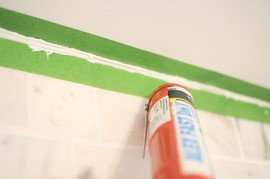 2 Caulk: A chemical sealant used to fill in and seal gaps where two materials join, for example, the tub and tile, to create a watertight and airtight seal. The term "caulking" is also used to refer to the process of applying this type of sealant
2 Caulk: A chemical sealant used to fill in and seal gaps where two materials join, for example, the tub and tile, to create a watertight and airtight seal. The term "caulking" is also used to refer to the process of applying this type of sealant
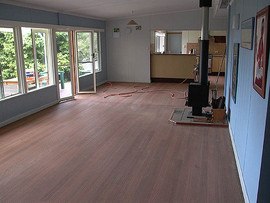 3 Sanded: Process of removing the top surface of a material, such as wood, using sandpaper and/or a specialized sanding machine (for large surface areas)
3 Sanded: Process of removing the top surface of a material, such as wood, using sandpaper and/or a specialized sanding machine (for large surface areas)
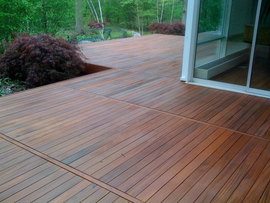 5 Ipe: A dense hard wood most commonly used for decking and flooring. Its color varies from reddish brown to blackish brown
5 Ipe: A dense hard wood most commonly used for decking and flooring. Its color varies from reddish brown to blackish brown
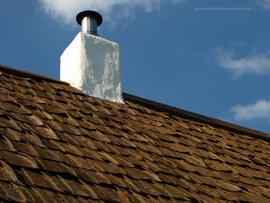 6 Shakes: A rugged flat piece of wooden construction material with at least one grain-split face, generally made of either redwood or cedar, laid in a series of overlapping rows and used to cover the outside of roofs and walls to protect against weather damage and leaks
6 Shakes: A rugged flat piece of wooden construction material with at least one grain-split face, generally made of either redwood or cedar, laid in a series of overlapping rows and used to cover the outside of roofs and walls to protect against weather damage and leaks
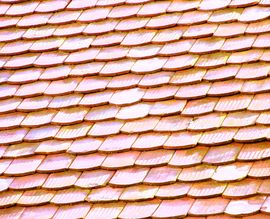 7 Shingles: A smooth, uniform, flat piece of construction material, available in a wide variety of materials and laid in a series of overlapping rows, used to cover the outside of roofs or walls to protect against weather damage and leaks.
7 Shingles: A smooth, uniform, flat piece of construction material, available in a wide variety of materials and laid in a series of overlapping rows, used to cover the outside of roofs or walls to protect against weather damage and leaks.
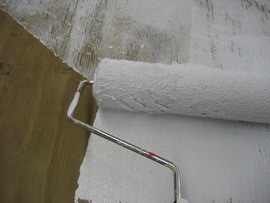 9 Primer: Preparatory coat applied to materials (drywall, wood, metal, etc.) before painting to ensure paint adhesion, extend paint durability, and help seal and protect the surface to be painted
9 Primer: Preparatory coat applied to materials (drywall, wood, metal, etc.) before painting to ensure paint adhesion, extend paint durability, and help seal and protect the surface to be painted
How much does it cost to repair wood siding in my city?
Cost to repair wood siding varies greatly by region (and even by zip code). To get free estimates from local contractors, please indicate yours.





